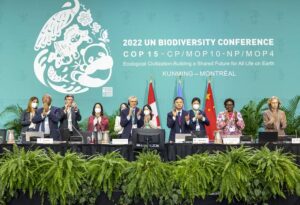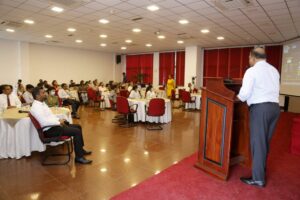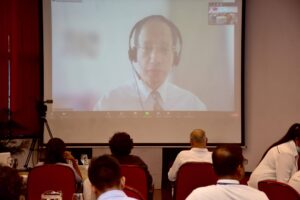Belize’s barrier reef is a marvel of biodiversity. Stretching 170 miles through the warm waters of the Caribbean and around atolls, cays, and coastal lagoons, the Western Hemisphere’s longest reef is home to some 1,400 species, from endangered hawksbill turtles and manatees to several threatened types of sharks. But climate change and warming oceans, excessive fishing and mangrove felling, and unchecked coastal development all pose risks to the fragile ecosystem.
The reef’s chances of survival received a vital boost last year. On November 5, Belize signed a debt-for-nature swap with The Nature Conservancy (TNC) an environmental organization, which reduced the country’s external debt by a striking 10 percent of GDP. Perhaps more significantly, it greatly improved the prospects for marine protection. Under the agreement, a TNC subsidiary lent funds to Belize to buy back a $553 million “superbond”—the government’s entire stock of external commercial debt, equivalent to 30 percent of GDP—at a discounted price of 55 cents per dollar. In return, Belize agreed to spend about $4 million a year on marine conservation until 2041. It will double its marine-protection parks—spanning coral reefs, mangroves, and the seagrasses where fish spawn—from 15.9 percent of its oceans to 30 percent by 2026.
Can biodiversity-rich Sri Lanka benefit from such debt for nature swaps? With the country facing an unprecedented balance of payments and sovereign debt crisis, threatening prolonged macroeconomic instability and social unrest in the short term – it surely can! The country has been presented with the option to forgo part of its debt in return for its aggressive commitment towards environmental conservation and investments in climate-related projects. Accordingly, the United Nations Development Programme (UNDP) has proposed to the Sri Lankan government to make use of debt-for-nature swaps which would allow a portion of the government’s large debt burden to be forgiven in exchange for the implementation of environmental policies or funding of conservation programmes.
If effectively implemented, debt-for-nature swaps have the potential to provide long-term credit benefits by offering debt relief while increasing investments that could bolster Sri Lanka’s resilience to environmental risks. Given the higher susceptibility of Sri Lanka to natural disasters such as droughts, flash floods, and tropical cyclones, which affect rural household incomes through disruptions caused to agricultural production, business activity, and damages to private property, it is wise for the country to explore this option. This is particularly true when nearly 30 percent of its labour force is engaged in agriculture, which accounts for just 7 percent of the economy.
Crucially, the current crisis risks derailing sustainable development, as the shrinking fiscal space of the government will likely result in limiting the (already low) budgetary allocations for conservation and natural resource management. While the ongoing sovereign debt crisis has led to many ideas around the need for, and opportunity to, introduce innovative financing instruments, there is a risk that without adequate stakeholder understanding of the nuances of such instruments, steps involved, commitments needed, and technical structuring, such efforts may not progress far or could be delayed – simply due to lack of understanding among stakeholders, and there being differences in understanding among types of stakeholders. On the latter, for instance, differences in understanding are already being seen, on the role of, and ways of structuring, such instruments between economists and finance professionals on one hand, and ecologists and environmental experts on the other. Surely this gap must be bridged!















